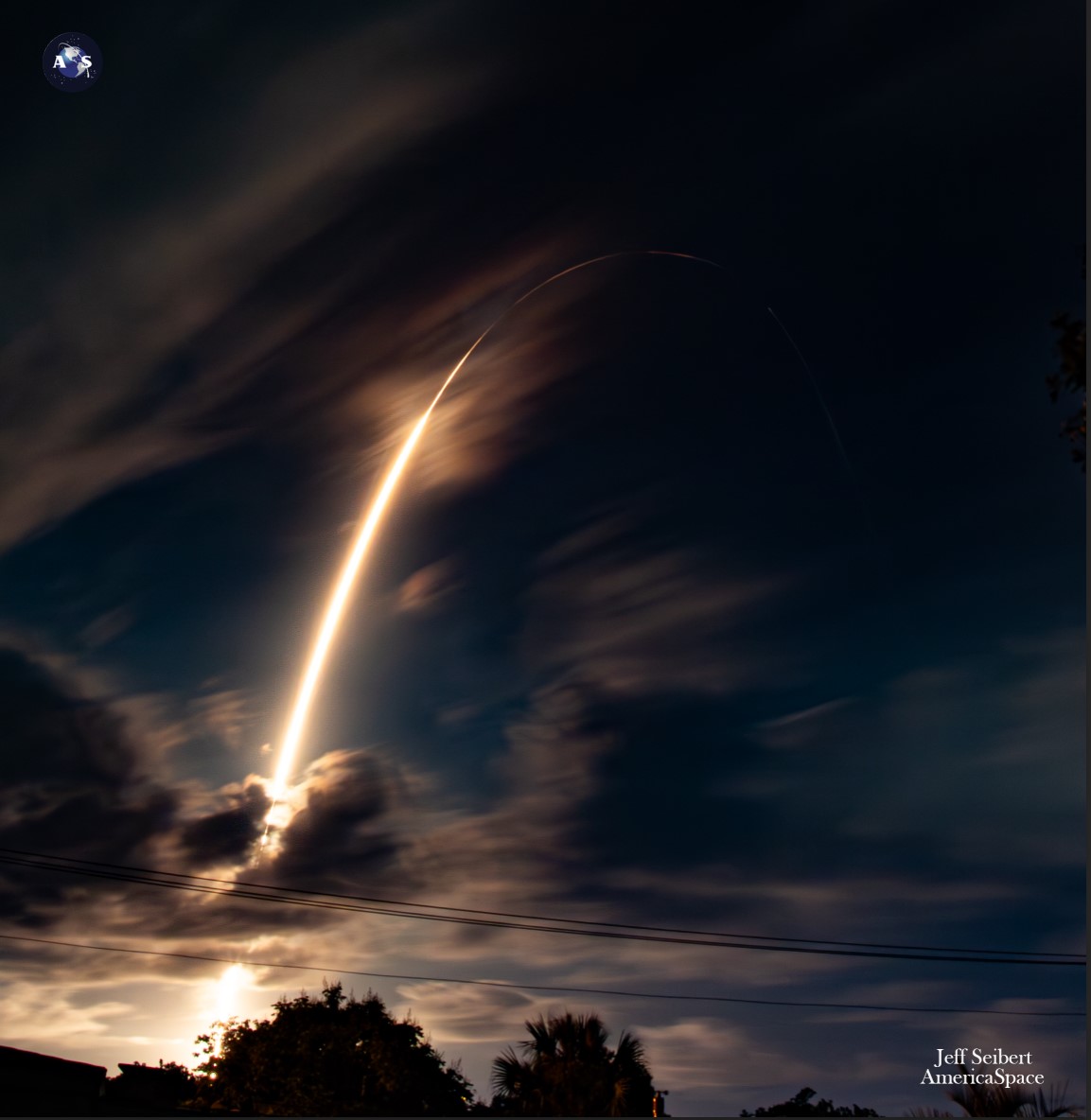
Weather appears reasonable for a pair of back-to-back SpaceX and United Launch Alliance (ULA) launches from the Space Coast, as the third Falcon 9 of the month and the first Atlas V of the year get ready for respective missions for internet communications and national security. SpaceX is tracking Friday evening from storied Space Launch Complex (SLC)-41 at Cape Canaveral Space Force Station, Fla., for its 37th Starlink mission of 2023—an impressive tempo which has so far lofted almost 1,400 of these flat-packed satellites into low-Earth orbit—whilst ULA has Eastern Range availability to fly its long-delayed NROL-107 Silent Barker payload from neighboring SLC-41 for the National Reconnaissance Office at 8:51 a.m. EDT Saturday.
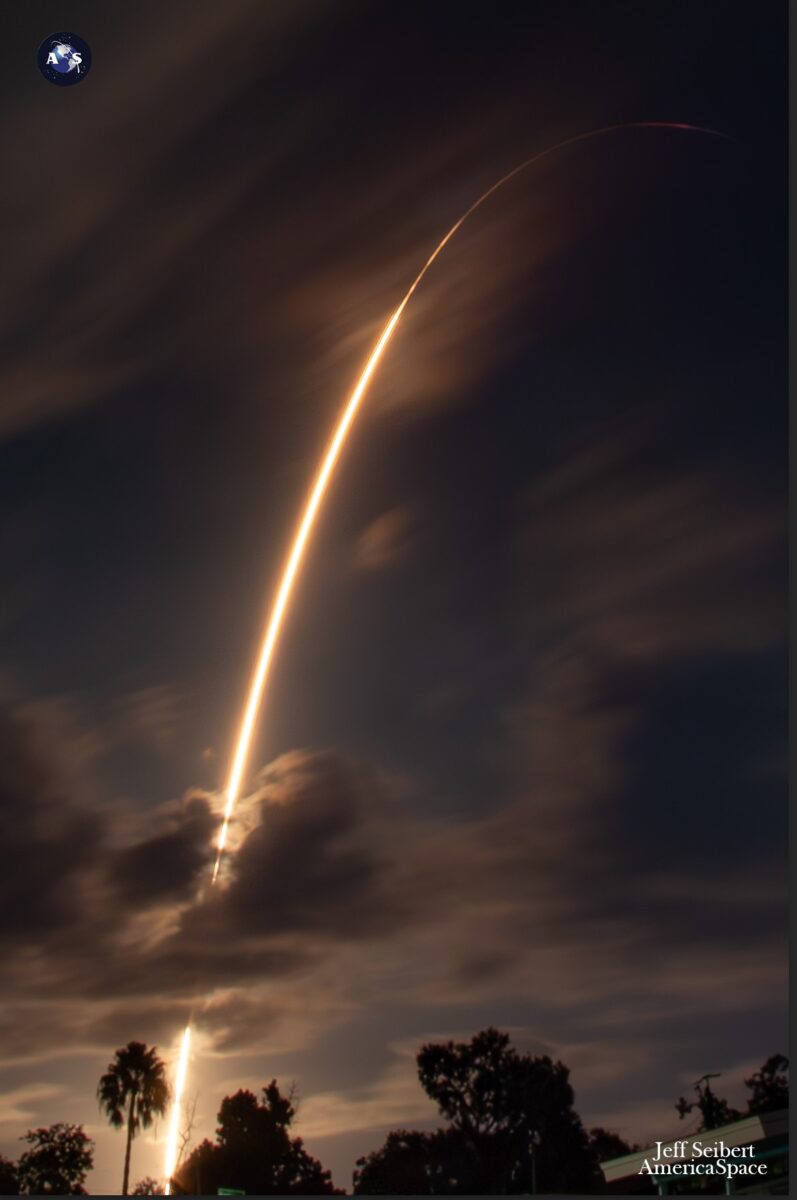
It has been an impressive year for SpaceX, which last week eclipsed its 2022 personal best of 61 annual launches, as well as completing its first nine-mission month in August and its 250th flight of a Falcon 9. And tomorrow’s launch will mark the 63rd Falcon-class launch of 2023—a figure that also includes a record-setting three outings by the triple-barreled Falcon Heavy—and the 60th Falcon 9.
Putting that into context, last year’s 61-mission empirical record achieved a cadence of one launch every 5.9 days. This year, the Hawthorne, Calif.-headquartered organization has drastically increased that mission pace to a launch every 4.0 days, raising the prospect that SpaceX might exceed 90 flights by New Year’s Eve.
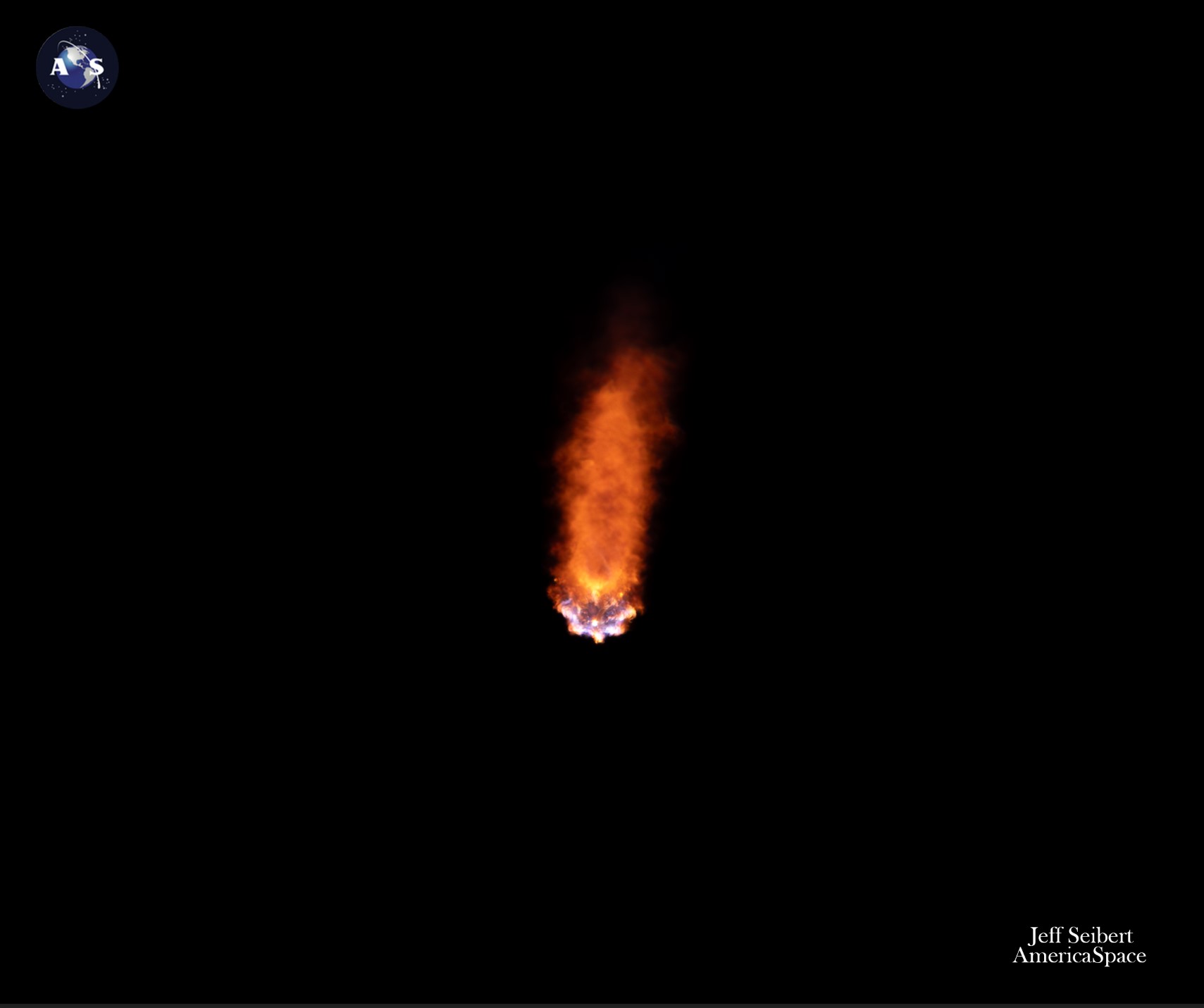
Weather for the end of the week and the coming weekend appears generally favorable, with a 60-percent chance of acceptable conditions on Friday, improving to 70 percent on Saturday, with a potential to climb to as high as 85-90 percent. Key watch-factors for this rare duopoly of launches from the Cape’s SLC-40 and SLC-41 are violations of the Cumulus Cloud Rule, the Surface Electric Fields Rule and the Lightning Rule.
“Broad high-level pressure center will continue to dominate the southeastern portion of the U.S. and the Florida Peninsula this week, creating a very dry air mass aloft, with benign weather conditions,” noted the 45th Weather Squadron at Patrick Space Force Base in its Wednesday update. “Cloud cover will be limited to the lower levels, where surface moisture and onshore flow may create isolated showers.
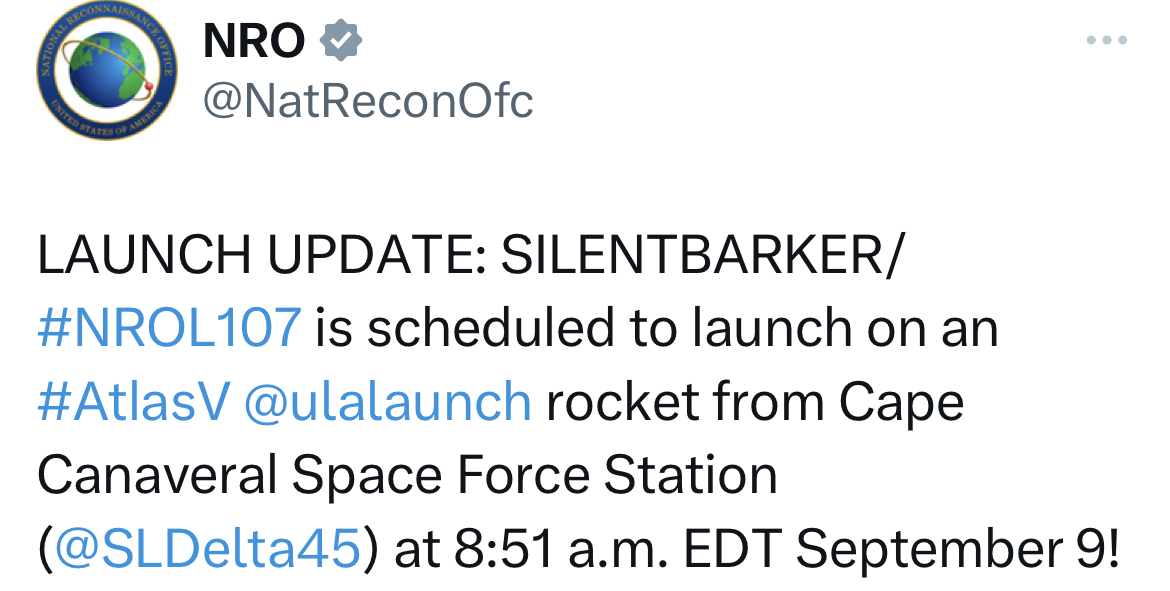
“By Friday morning, a mid-level trough will center over Georgia and provide enough moisture for afternoon thunderstorm development over Central Florida,” it was added. “Chances for isolated thunderstorms are greatest in the late afternoon to early evening on Friday and decrease into the evening hours”, with “similar conditions” anticipated on Saturday, manifested by “diurnal thunderstorm potential in the afternoon and more favorable conditions towards the evening”.
Following the Falcon 9’s Starlink launch, attention will turn to SLC-41 for the second ULA mission of 2023, as the “Mighty Atlas”—outfitted in its most powerful guise, the “551”, nicknamed “The Bruiser” by ULA CEO Tory Bruno—gets ready to fly on Saturday morning. Delayed from the end of August, due to the ravages of Hurricane Idalia, the 551 has already flown 12 times and is so named on account of its 17.7-foot-diameter (5.4-meter) payload fairing, five strap-on Graphite Epoxy Motor (GEM)-63 solid-fueled boosters and its single-engine Centaur upper stage.
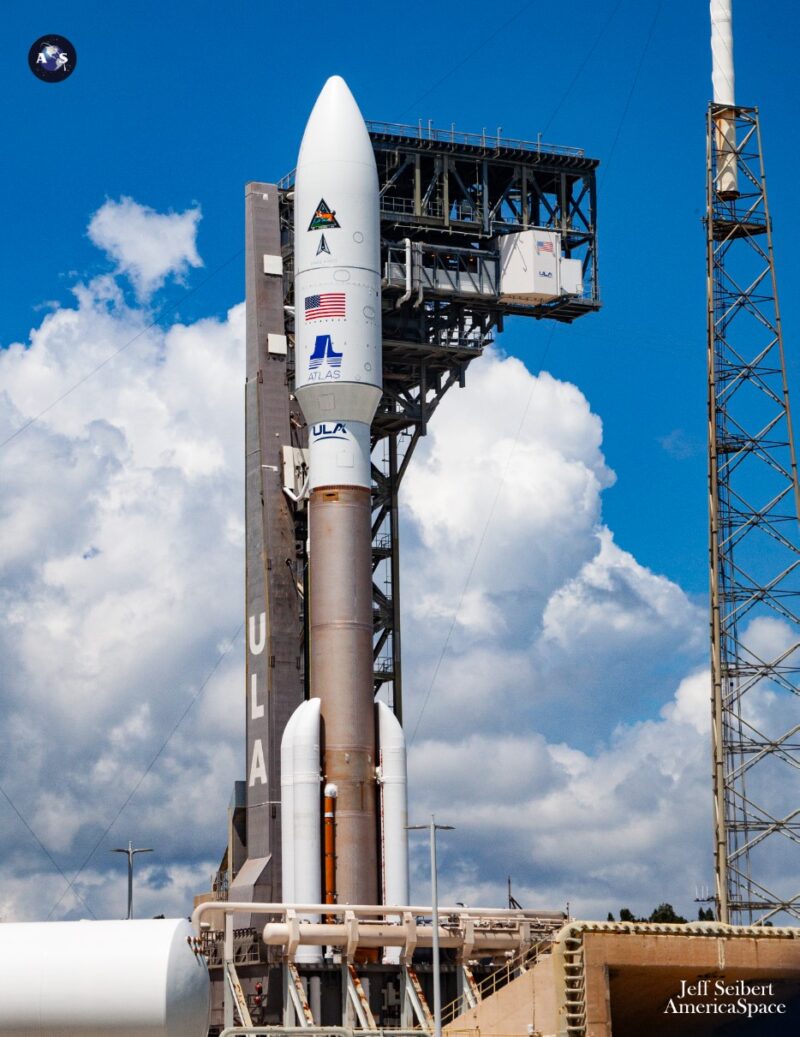
Primary payload is the long-delayed NROL-107, targeting insertion into Geostationary Earth Orbit (GEO) at an altitude of 22,300 miles (35,900 kilometers). Encumbered with the curious nomenclature of “Silent Barker”, it has been waiting in the wings for several years, ever since contracts to launch it were awarded to ULA back in February 2019 as part of a three-mission Atlas V deal with the Air Force, worth an estimated $441.76 million.
Under the terms of that contract, part of the Air Force’s Phase 1A procurement strategy, two other missions—the fifth and sixth geostationary members of the Space-Based Infrared System (SBIRS GEO-5 and GEO-6)—later made it safely to orbit in May 2021 and August of last year, respectively. But Silent Barker, originally baselined to fly in Fiscal Year 2022 but postponed substantially into this year’s third quarter, has proven stubbornly more irksome to get off the ground.
The exact nature of whatever has kept Silent Barker ground-bound for so long remains unclear. But last fall, a payload-related issue required the spacecraft to be returned to its manufacturer for attention.
Silent Barker is a powerful Space Domain Awareness (SDA) mission, executed jointly by the National Reconnaissance Office and the Space Force’s Space Systems Command (SSC). “Silent Barker is designed to detect and maintain custody of space objects,” explained ULA. “Silent Barker will provide the capability to search, detect and track objects from space-based sensors for timely custody and event detection.
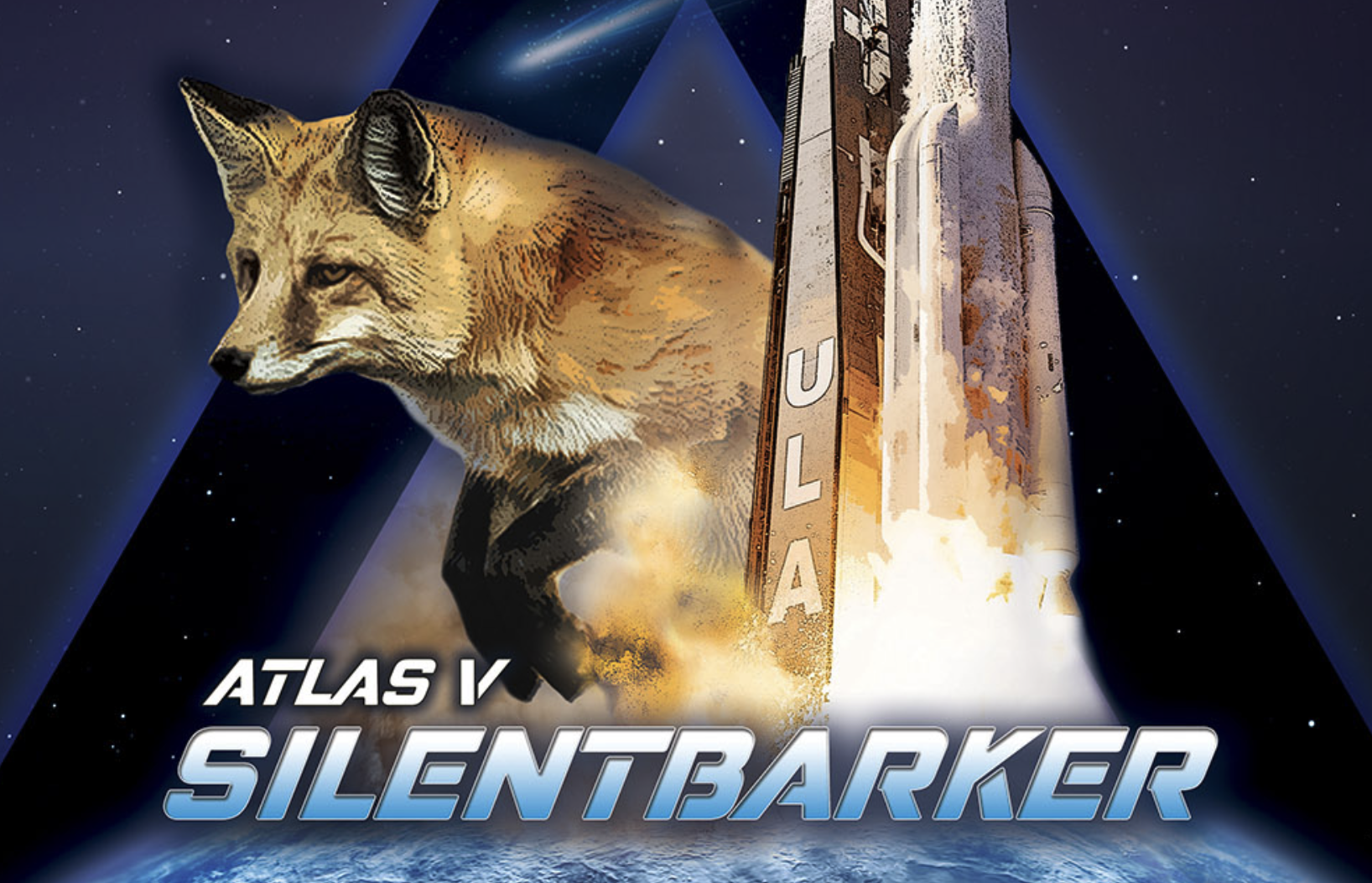
“Surveillance from space augments and overcomes existing ground-sensor limitations with timely, 24-hour, above-the-weather collection of satellite metric data, only possible with a space-based sensor,” it continued, “and then communicates its findings to satellite operators, analysts and other mission users.”
The mission’s patch symbology—a leaping fox—alludes to Silent Barker’s overall objective. “The leaping fox,” tweeted the NRO, earlier in August, “portrays the agility and clever intelligence that gives us an edge over adversaries.”
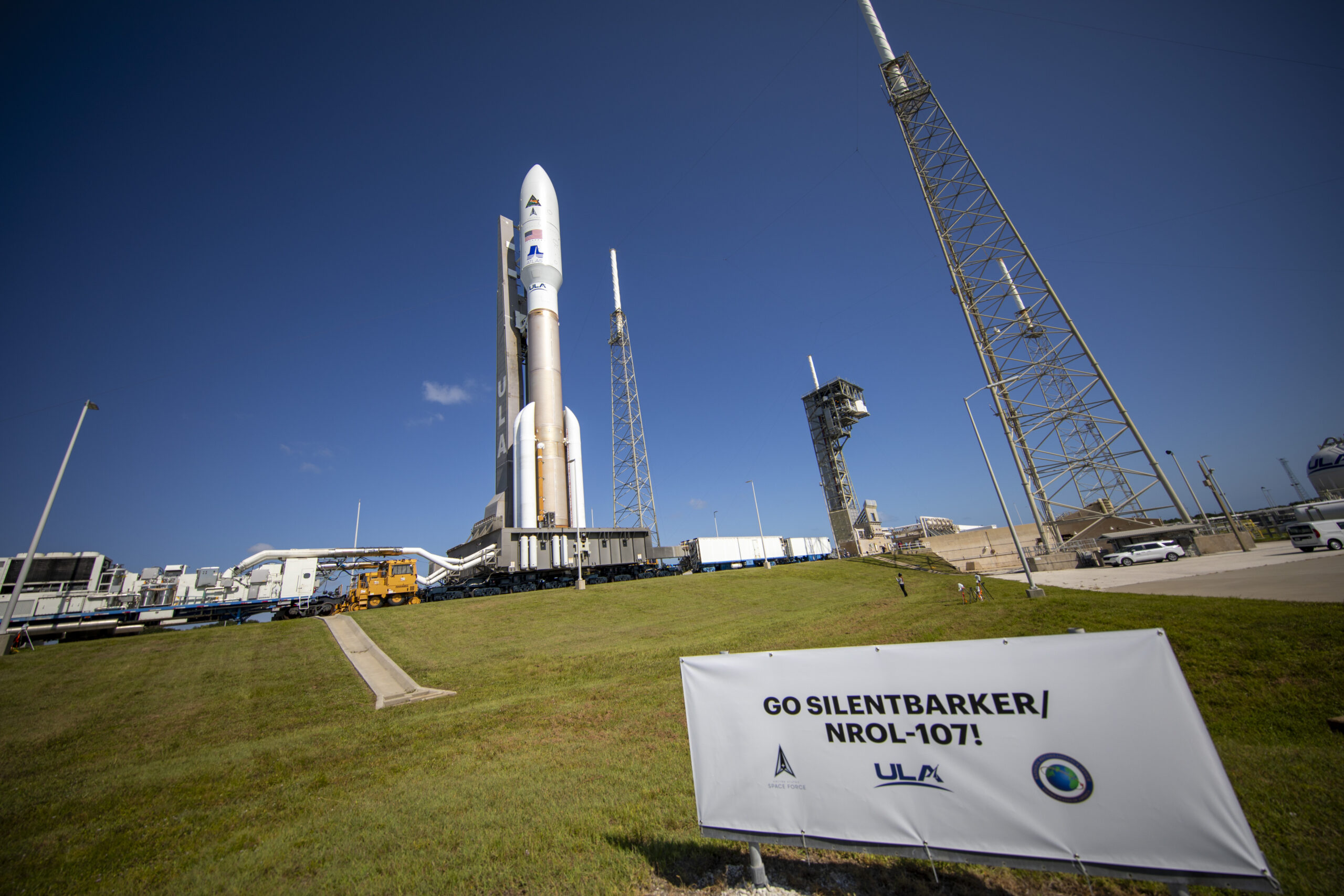
Stacking of Atlas V hardware for this important mission began on 13 July, when the 107-foot-long (33-meter) Common Core Booster (CCB) was elevated to a vertical configuration atop the Mobile Launch Platform (MLP) inside the Vertical Integration Facility (VIF), adjacent to SLC-41. A week later, the five Northrop Grumman-built GEM-63 boosters—each of which will generate 371,500 pounds (168,500 kilograms) of thrust at liftoff—were mounted around the CCB’s base, to complete the initial structural build-up of the lowermost portion of the Mighty Atlas.
All told, and when combined with the CCB’s Russian-built RD-180 engine, they will power the Silent Barker mission off SLC-41 with a total impulse in excess of 2.3 million pounds (1.4 million kilograms). The 41.5-foot-long (12.6-meter) Centaur upper stage was added to the stack on 24 July and earlier this month teams conducted a Wet Dress Rehearsal (WDR), rolling the stack—minus its payload—out to SLC-41 and loading it with over 66,000 gallons (300,000 liters) of liquid oxygen and hydrogen propellants.
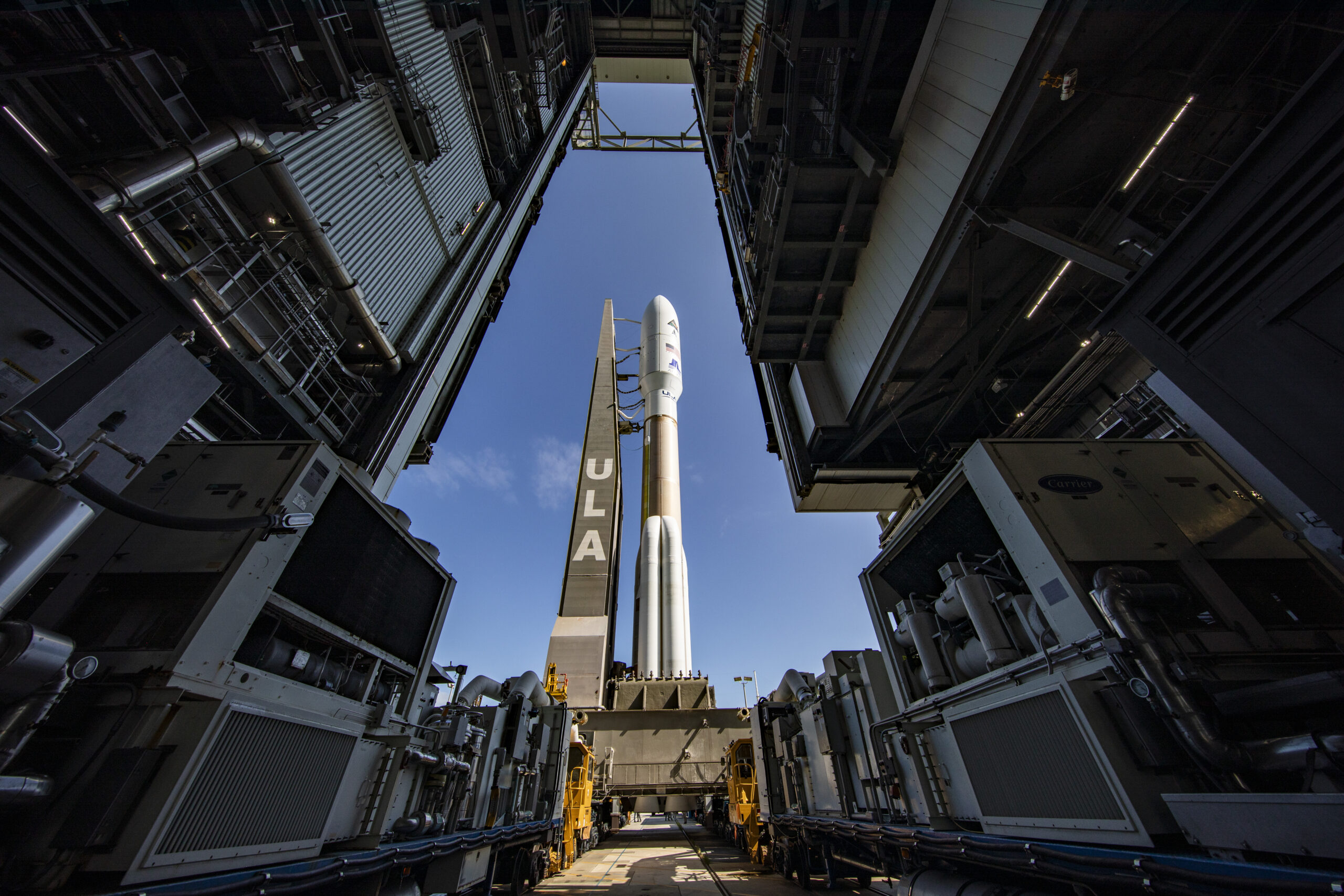
Already, the Atlas V had been earlier loaded with 25,000 gallons (94,000 liters) of “storable” kerosene and the WDR also furnished ULA and opportunity to wring out the Atlas V’s stages, avionics and ground systems. The test proceeded until a scheduled cutoff point, just ahead of RD-180 ignition before the rocket returned to the VIF.
Last month, the Short Payload Fairing (SPF)—a bullet-like structure which encapsulates Silent Barker and protects it during the high dynamism of launch and ascent—was transported to the VIF and hoisted atop the stack, raising the height of the Atlas V to 196 feet (59.7 meters). A satisfactory Launch Readiness Review (LRR), led by Launch Director Paul Aragon, produced a definitive “Go” to proceed with Silent Barker’s launch at 8:34 a.m. EDT on Tuesday, 29 August.
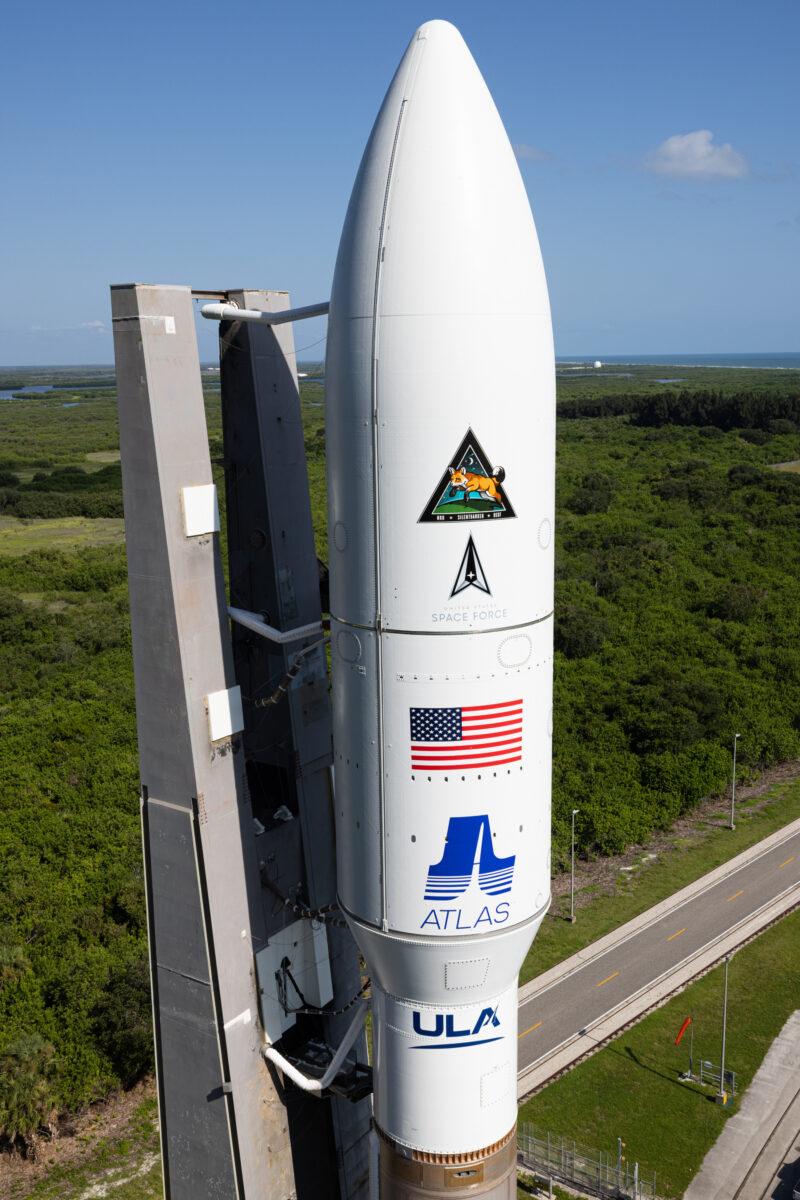
But Idalia soon put paid to that hope. First observed in late August as a trough of low pressure, offshore of the coastline of Central America, it organized into a tropical depression and by the 29th was categorized as a Category One hurricane, reaching Category Two, Three and Four by the month’s end, with sustained winds of 130 mph (215 km/h).
Finally, on Wednesday ULA and the NRO announced that they had received Eastern Range clearance for a new launch attempt at 8:51 a.m. EDT Saturday. It will be the second ULA mission of 2023, coming on the heels of June’s Delta IV Heavy launch with the classified NROL-68 payload for the National Reconnaissance Office.





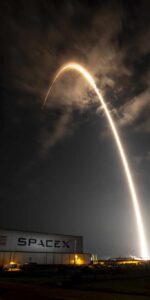
One Comment
One Ping
Pingback:Mighty Atlas Stands Ready for Long-Delayed Silent Barker Mission ... - AmericaSpace - Digi90